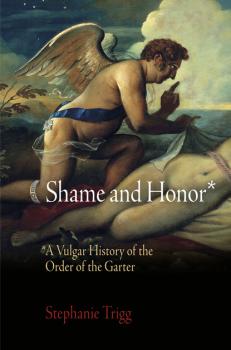ТОП просматриваемых книг сайта:
Stephanie Trigg
Список книг автора Stephanie TriggАннотация
The facts and fictions that continue to shape our understanding of Chaucer and his place in literary tradition Is Chaucer the father of English literature? The first English poet? Was he a feminist? A political opportunist? A spy? Is Chaucer’s language too difficult for modern readers? 30 Great Myths about Chaucer explores the widely held ideas and opinions about the medieval poet, discussing how ‘myths’ have influenced Chaucer’s reception history and interpretations of his poetry through the centuries. This unique text offers original insights on the character of Chaucer, the nature of his works, the myths that inform our conceptions of Chaucer, and the underlying causes of these myths . Each accessible and engaging chapter focuses on a specific myth, including those surrounding Chaucer’s romantic life, political leanings, religious views, personal struggles, financial challenges, ideas about chivalry, representations of social class, and many others. More than simply correcting inaccurate facts or clarifying common misconceptions about Chaucer, the text delves deeper to address how the myths have shaped the critical interpretation and enduring literary legacy of Chaucer. This innovative volume: Explores how generations of readers continue to shape understanding of Chaucer Highlights the intersection of medievalism and Chaucer studies Helps readers detach myths about Chaucer from critical readings of his works Examines whether myths about Chaucer are based on historical fact or literary interpretation Discusses the history of reading Chaucer in contexts of biography, criticism, and popular culture 30 Great Myths about Chaucer is an indispensable resource for academics, researchers, graduate students, upper-level undergraduates, and general readers with interest in Chaucer and early English and Middle Ages literatur e.
Аннотация
"It's a nice piece of pageantry. . . . Rationally it's lunatic, but in practice, everyone enjoys it, I think."—HRH Prince Philip, Duke of Edinburgh Founded by Edward III in 1348, the Most Noble Order of the Garter is the highest chivalric honor among the gifts of the Queen of England and an institution that looks proudly back to its medieval origins. But what does the annual Garter procession of modern princes and politicians decked out in velvets and silks have to do with fourteenth-century institutions? And did the Order, in any event, actually originate in the wardrobe malfunction of the traditional story, when Edward held up his mistress's dropped garter for all to see and declared it to be a mark of honor rather than shame? Or is this tale of the Order's beginning nothing more than a vulgar myth? With steady erudition and not infrequent irreverence, Stephanie Trigg ranges from medieval romance to Victorian caricature, from imperial politics to medievalism in contemporary culture, to write a strikingly original cultural history of the Order of the Garter. She explores the Order's attempts to reform and modernize itself, even as it holds onto an ambivalent relationship to its medieval past. She revisits those moments in British history when the Garter has taken on new or increased importance and explores a long tradition of amusement and embarrassment over its formal processions and elaborate costumes. Revisiting the myth of the dropped garter itself, she asks what it can tell us about our desire to seek the hidden sexual history behind so venerable an institution. Grounded in archival detail and combining historical method with reception and cultural studies, Shame and Honor untangles 650 years of fact, fiction, ritual, and reinvention.



